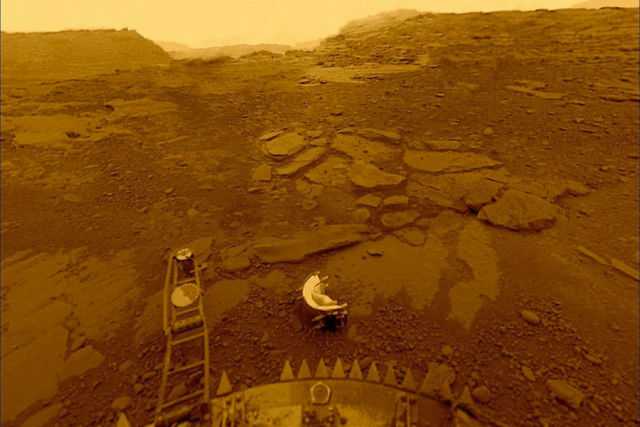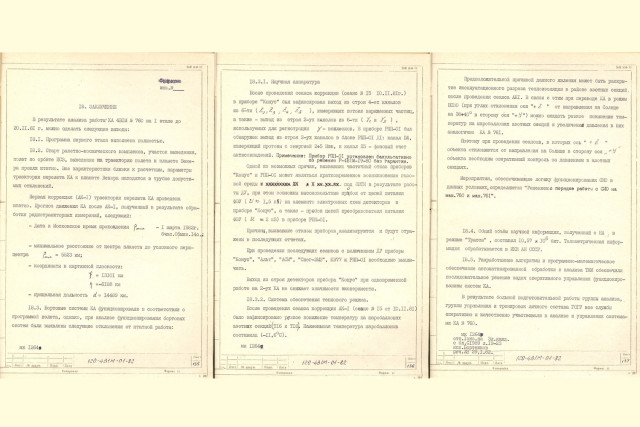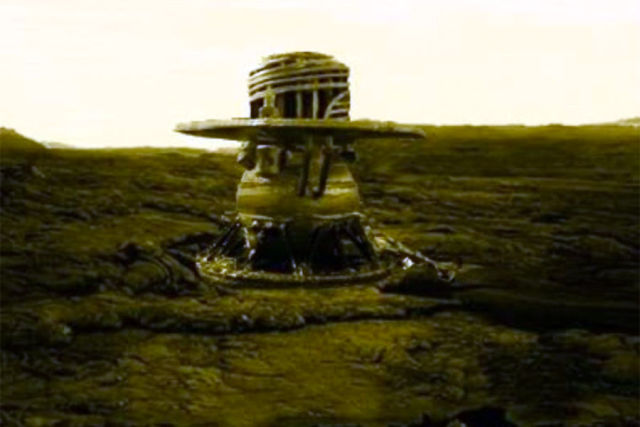Roscosmos has published declassified documents of the Venus-13 mission
"Newspaper.Ru" got acquainted with declassified documents about the Venus-13 program and tells how the historical mission was being prepared and what problems happened on the way to the neighboring planet.
On March 1, 1982, the lander of the Venus-13 mission reached the surface of the planet after four months of flight. The launch from Earth was carried out from the Baikonur cosmodrome on a Proton-K rocket with a DM upper stage.
Five days after the launch of Venus-13, an almost identical device, Venus-14, was launched, which also reached the surface. At both interplanetary stations, a whole set of instruments was installed to determine the chemical composition of the planet: a mass spectrometer, a gas chromatograph, an optical spectrophotometer, a nephelometer, an X-ray fluorescence spectrometer. In addition, the devices were equipped with an accelerometer, a barometer, a hydrometer and a radio seismograph, as well as a pair of cameras that transmitted color images of the surface of Venus for the first time.
The descent of Venus-13 took place in several stages. At launch, it was packed in a shock-resistant spherical capsule with a diameter of 2.4 meters with an ablative coating designed for heat during atmospheric entry. After the first stage of braking, with a peak overload of more than 200 g, a withdrawal parachute opened on top of the capsule, and the capsule was horizontally cut in half by a pyrosnur. After that, the upper half left the device because of the parachute, and the lower half fell under the influence of gravity. At the next stage, the main parachute came out, working up to a height of 47 kilometers, then it was unfastened and replaced with a brake shield: in the dense atmosphere of Venus, a large area is not needed for braking.

Image source: JSC "NPO Lavochkina"
Some devices began to work even at the stage of descent, so the radio seismograph recorded numerous electrical discharges. After landing, the cameras took more than 20 pictures of the planet, they show rocks and dark fine-grained soil. In total, the lander worked for 127 minutes, after which it failed due to 460-degree heat. During this time, he managed to extract rock samples with the help of a drill and establish their chemical composition: there were leucite alkaline basalts in the landing area.
On the fortieth anniversary of the landing of the Venus-13 station, Roscosmos published declassified documents concerning some stages of this mission. Among them are a technical report on ground tests and preparation for the launches of the Venus-13,14 missions, an electrical test report, a test report on a ground-intake device and other documents.
"All these documents are of great interest to specialists, since they are being put into free circulation for the first time. The most important material is contained in two reports on the flights of the Venera-13 and Venera-14 stations. For the first time, researchers of the history of cosmonautics can get acquainted with all the details of these missions directly, and not in the retelling of the popularizers of the Soviet era," he told the newspaper.En" popularizer of cosmonautics, author of books Anton Pervushin.
Thus, the report on the flight of the station "Venus-13" provides details of some failures of on-board equipment during the flight to the planet. One of them was connected with the operation of the device "Cone" - a detector of the intensity and coordinates of gamma-ray burst sources.
 |
| Documents. |
| Source: Roscosmos |
"One of the possible reasons that caused the partial failure of the Konus and RPP-01 devices may be the short-term occurrence of a gas environment under EVTI (screen-vacuum insulation) as a result of the operation of the remote control (propulsion system), while high-voltage breakdowns from the power supply circuits of the power supply system are possible," the document says.
Another failure was associated with a sharp drop in temperature on the nitrogen sections to -11.6 degrees.
- the document says.
"Now there is no need to search for anything in different books and articles. All verified information is in front of your eyes. It's like a reference book or a dictionary: we don't read it, but look in if necessary," explained the newspaper.Ru" Pervushin.
The Venus-13 mission is also notable for the fact that decades later, in the images transmitted by it, scientist Leonid Xanthomaliti discovered moving objects that may have "properties of living beings", including those similar to a scorpion, a mushroom, a lizard. The astrobiological community did not accept these findings, but could not explain the exact nature of the observed structures. You can read in detail about what the Russian scientist saw there in the article "Newspapers.Ru".
Pavel Kotlyar

